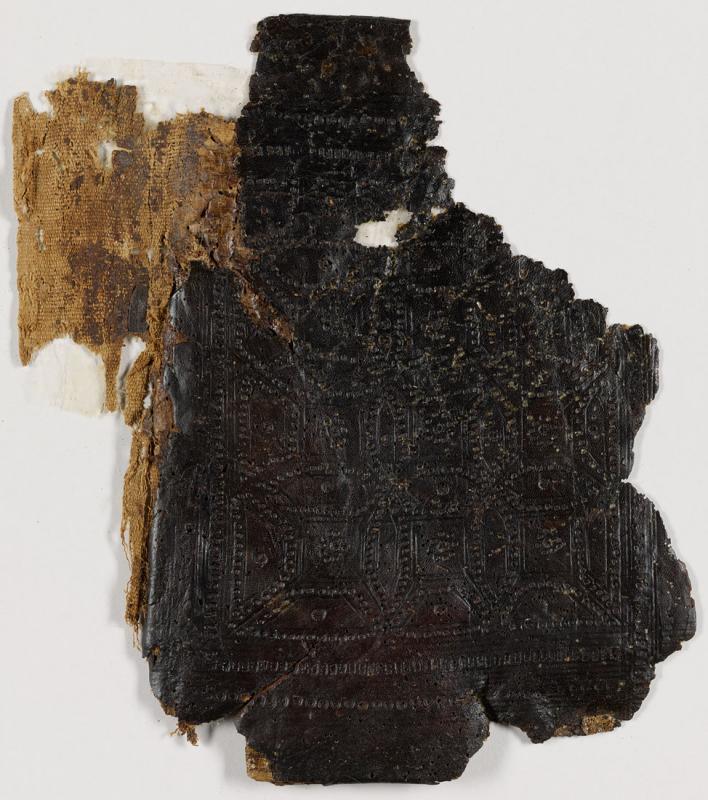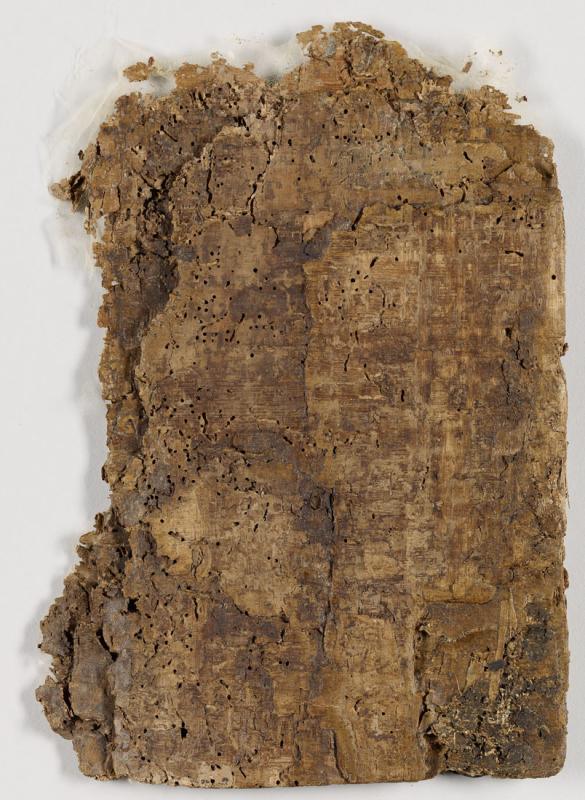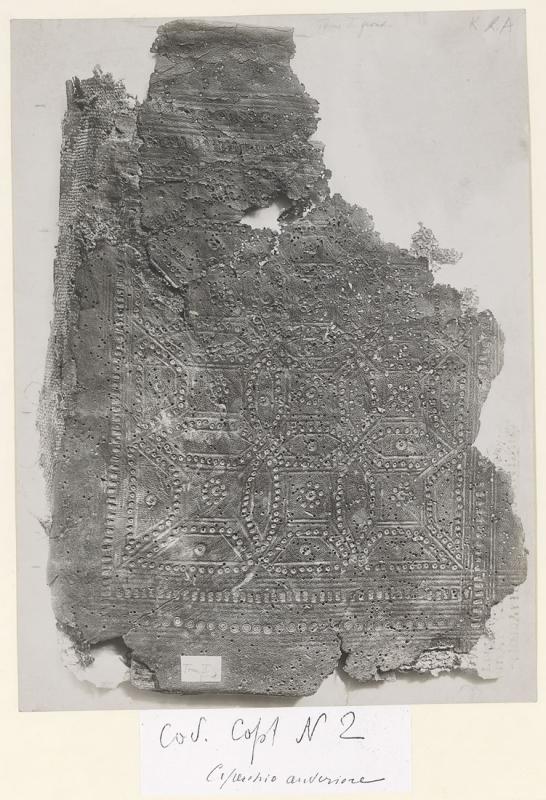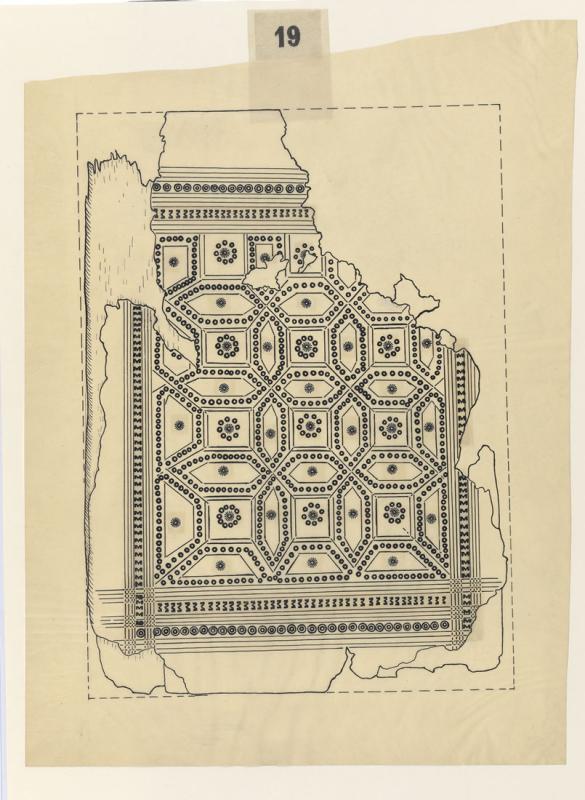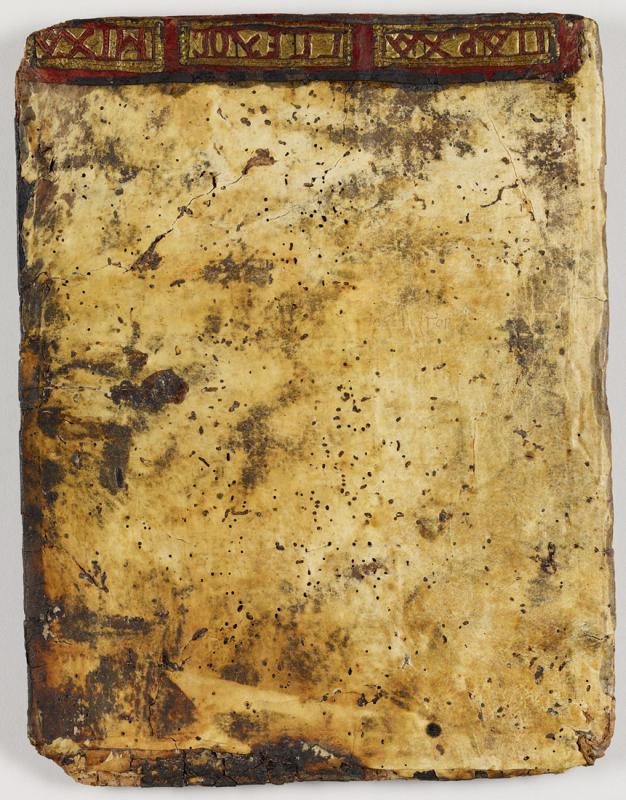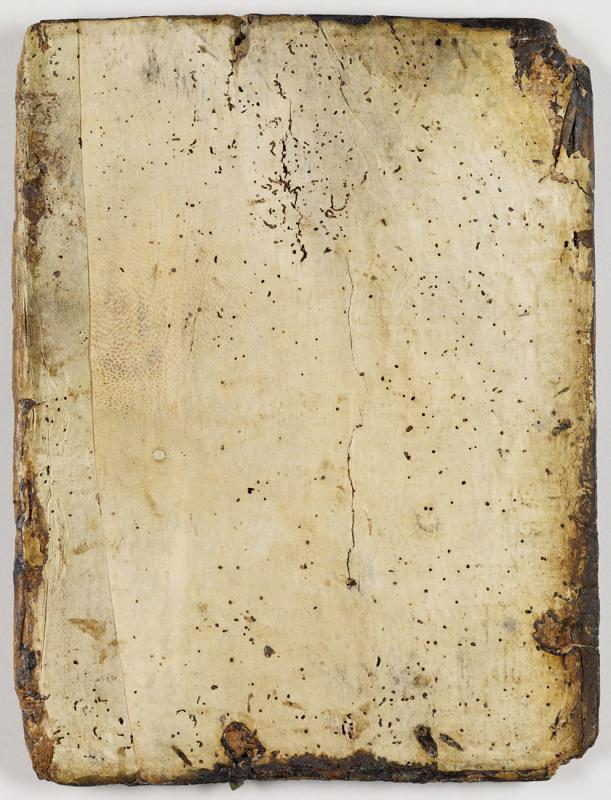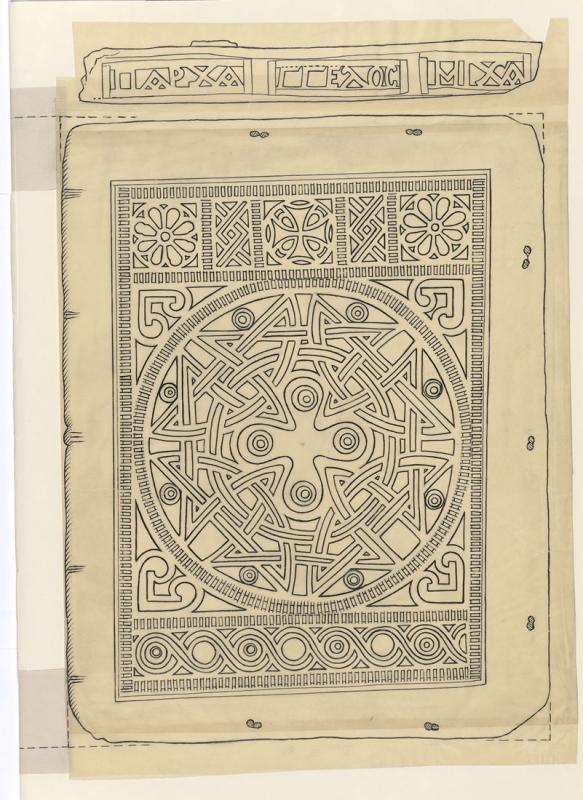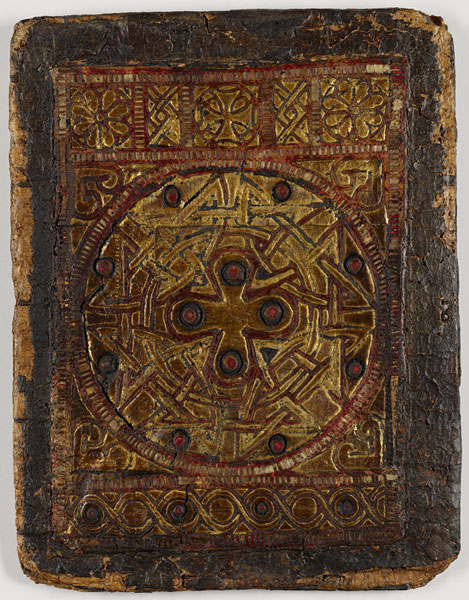
The Copts were native Egyptians who played an important role in the history of Christianity. Their greatest contribution was the development of monasticism. When, in 1911, Pierpont Morgan purchased most of the sixty Coptic manuscripts found a year earlier in Hamouli (III, No. 2), he acquired the largest, oldest, and most important group of Sahidic manuscripts with a single provenance, the nearby Monastery of St. Michael in the Fayum district of Egypt. Almost all were found with their bindings, and they constitute an essential collection for the study of Coptic bookbinding. Because of the fragile condition of both manuscripts and bindings, it was necessary to detach and preserve them separately. Unfortunately some information about the methods of sewing was thereby lost.
The cover pictured on this page is regarded as the finest surviving Coptic bookbinding. At its center is a cross surrounded by interlace designs composed of two intertwined squares within a circle. All these were cut from a single piece of red leather and sewn over gilt parchment. In addition, white parchment stripes were woven into the borders marking the broad decorative areas and the large circle. Small colored circles, with bright red centers, punctuate the arms of the cross, the perimeter of the large circle, and the bottom border. The use of leather tracery over the gilded background is earlier than this binding, for the identical technique is found on Coptic shoes usually dated to the sixth and seventh centuries.
The manuscript of the Gospels this cover protected, however, was not made at the Monastery of St. Michael. According to its colophon, the manuscript was originally owned by the neighboring Church of the Blessed Mary Mother of God at Perkethout. Later the Monastery of St. Michael added its ex-libris—also made of red leather letters sewn onto gilt parchment on the inside of the front cover.

